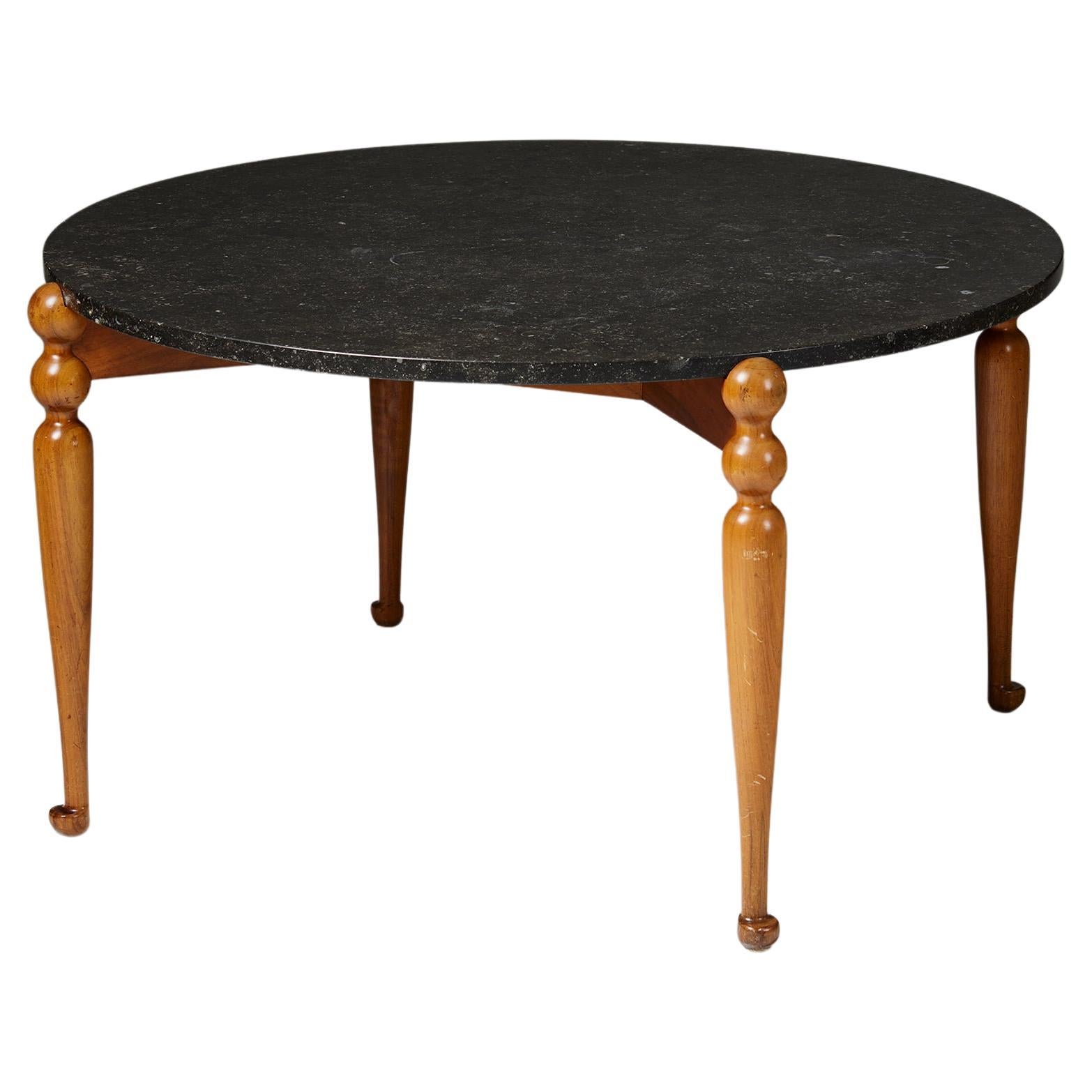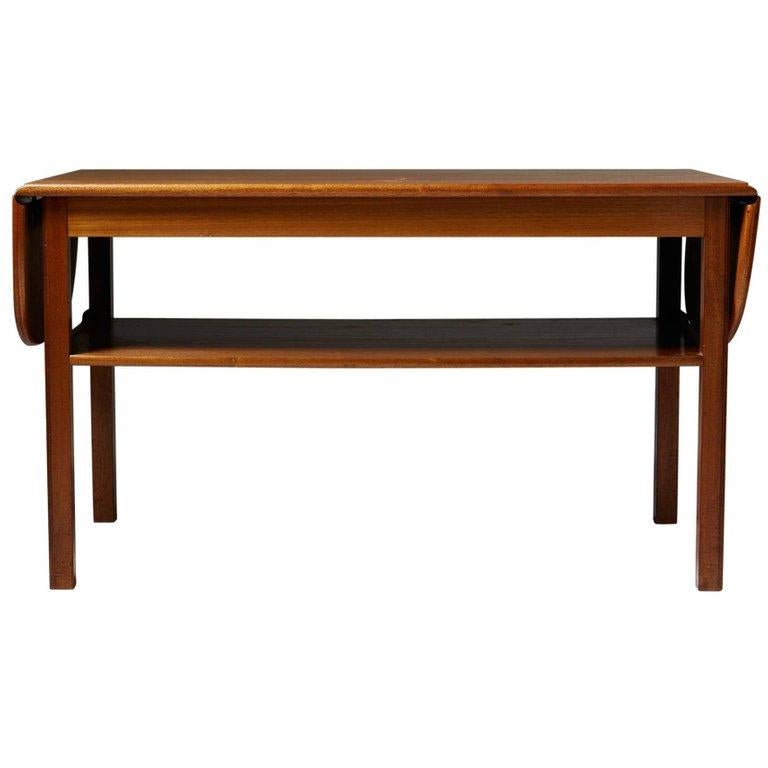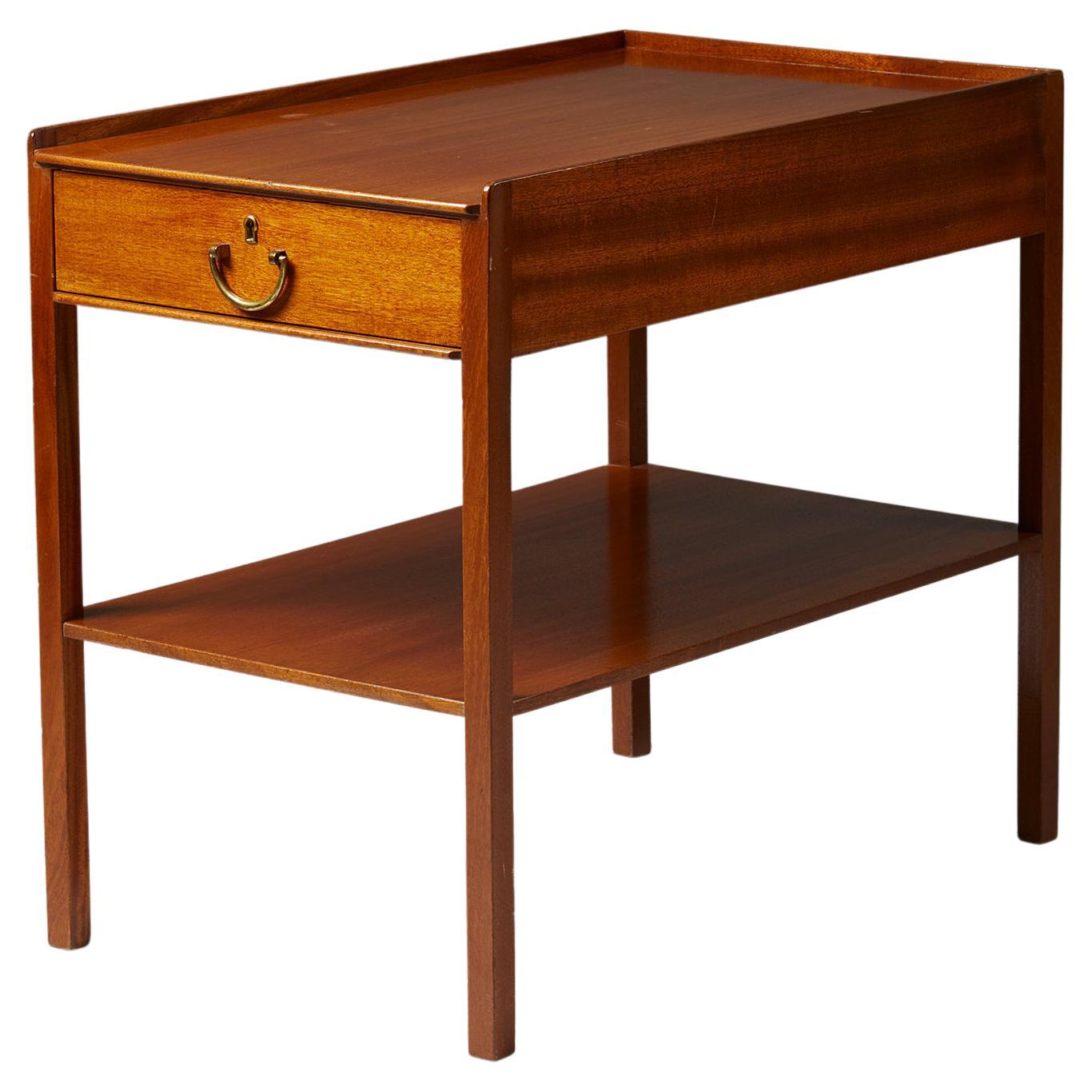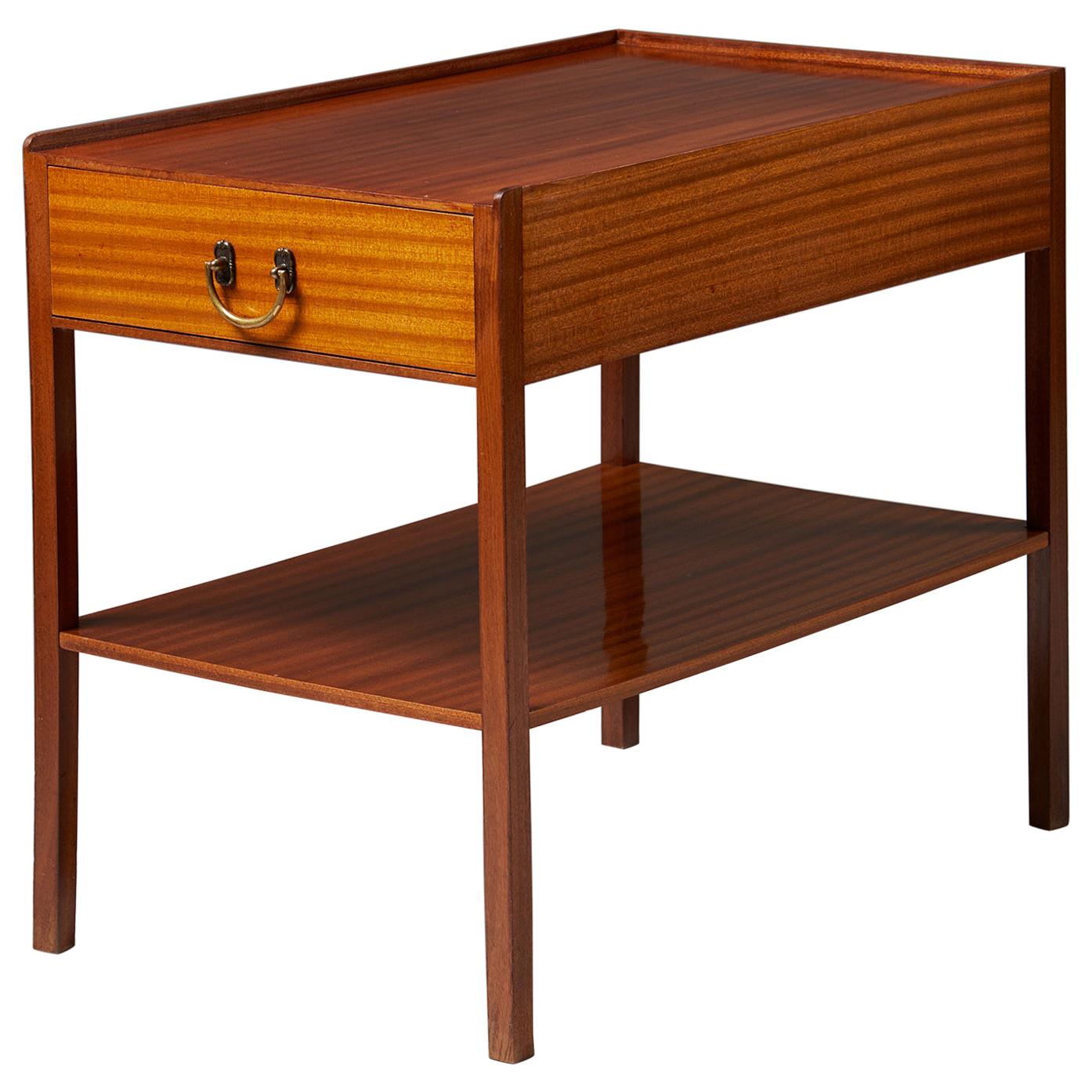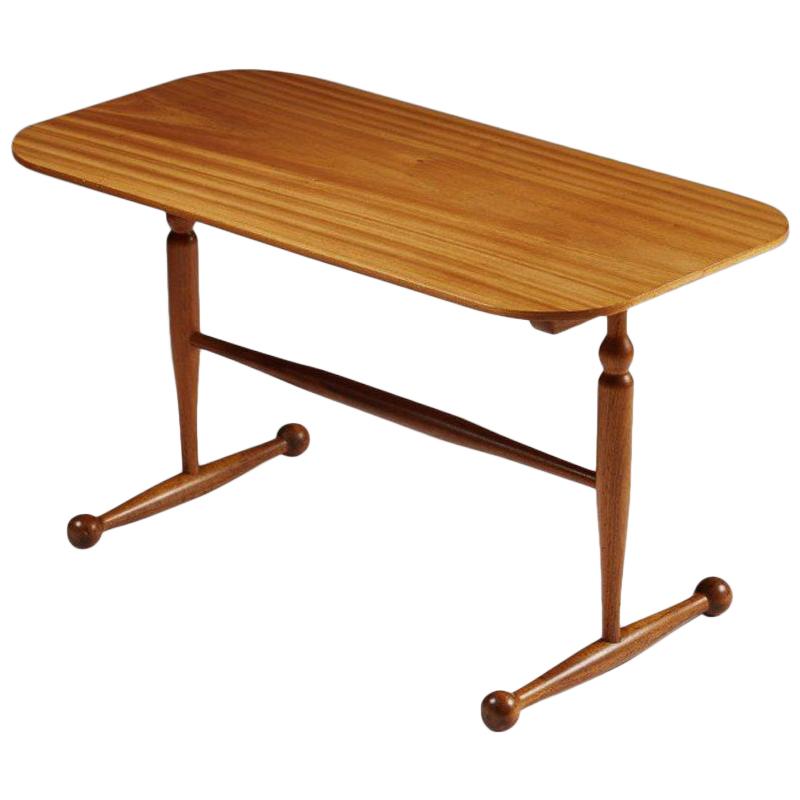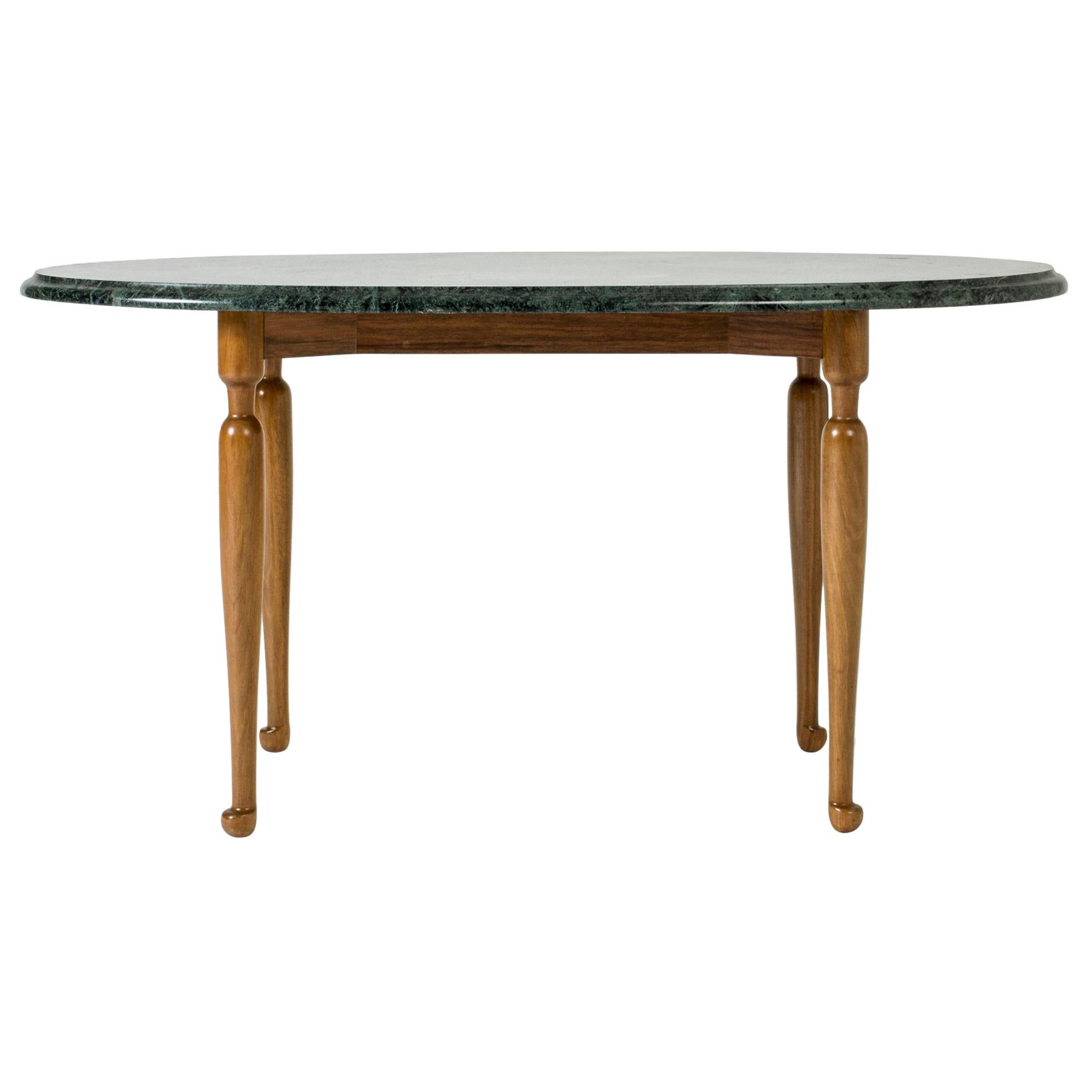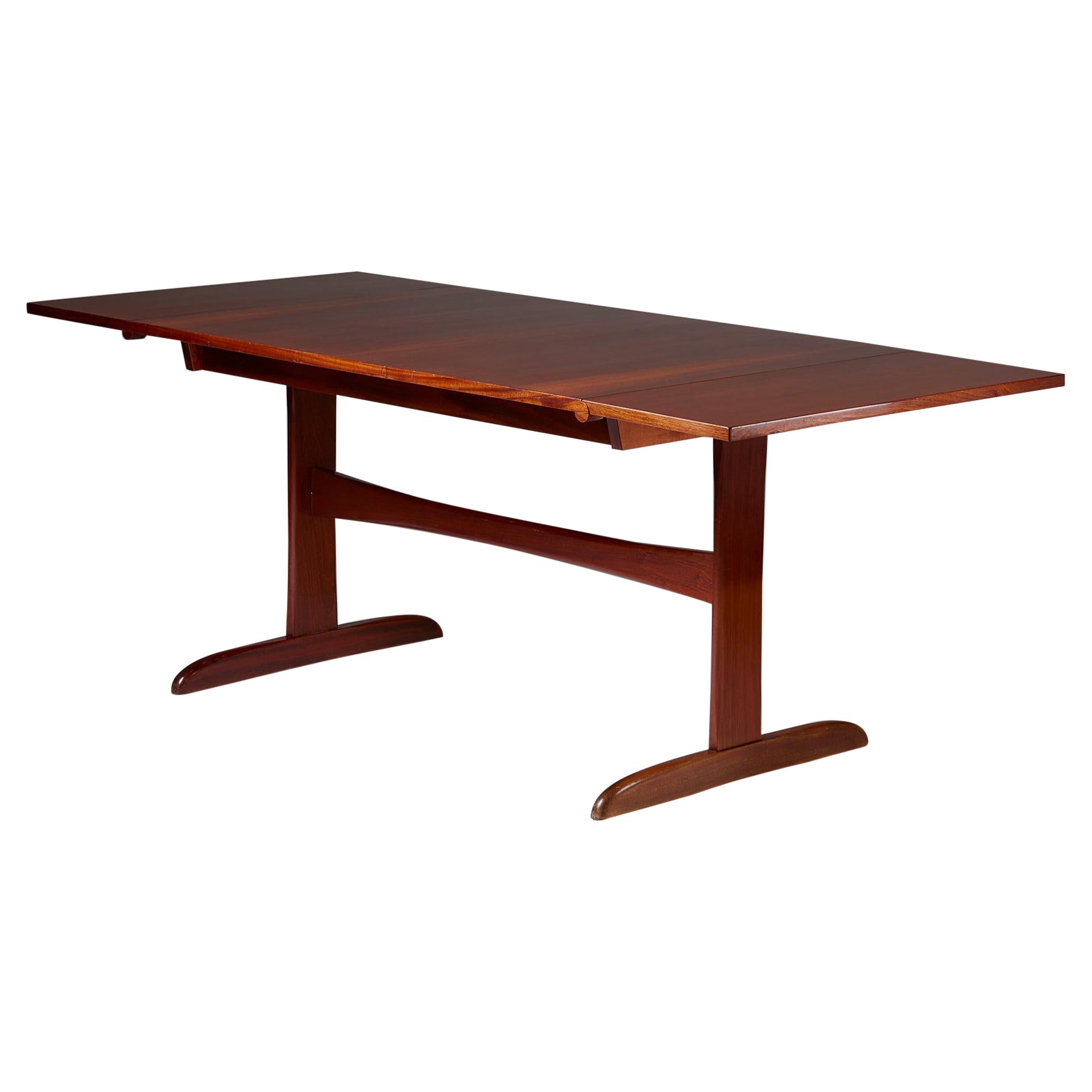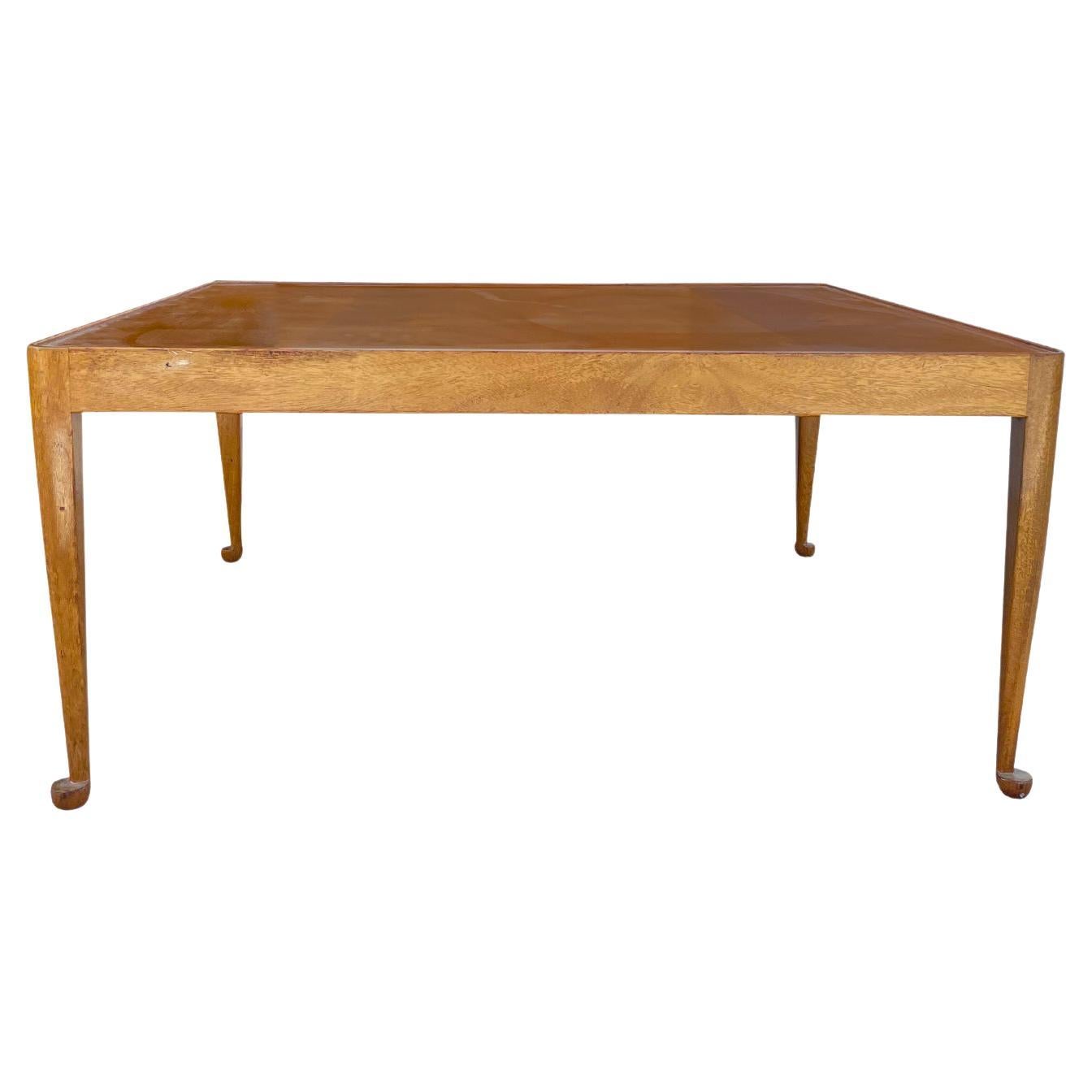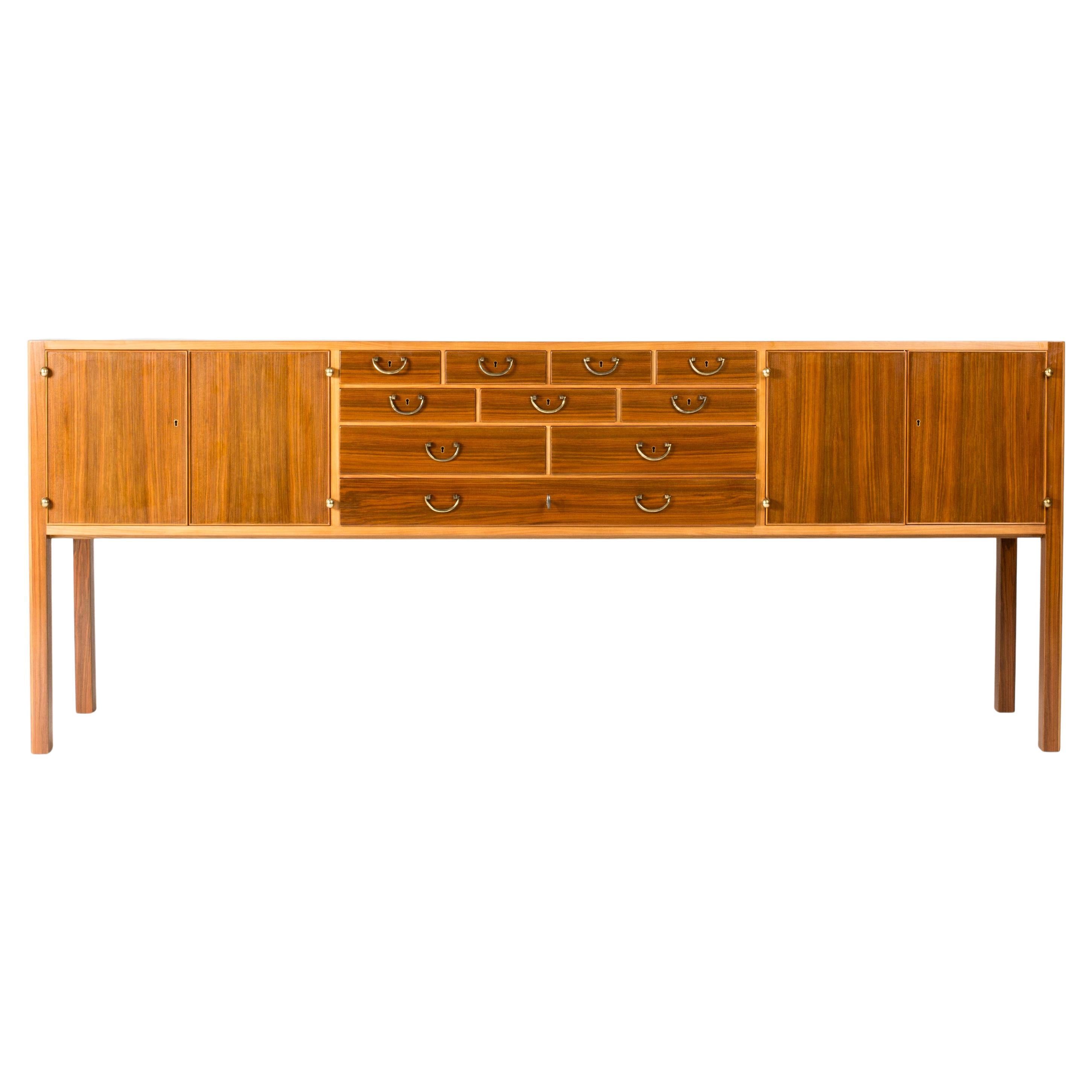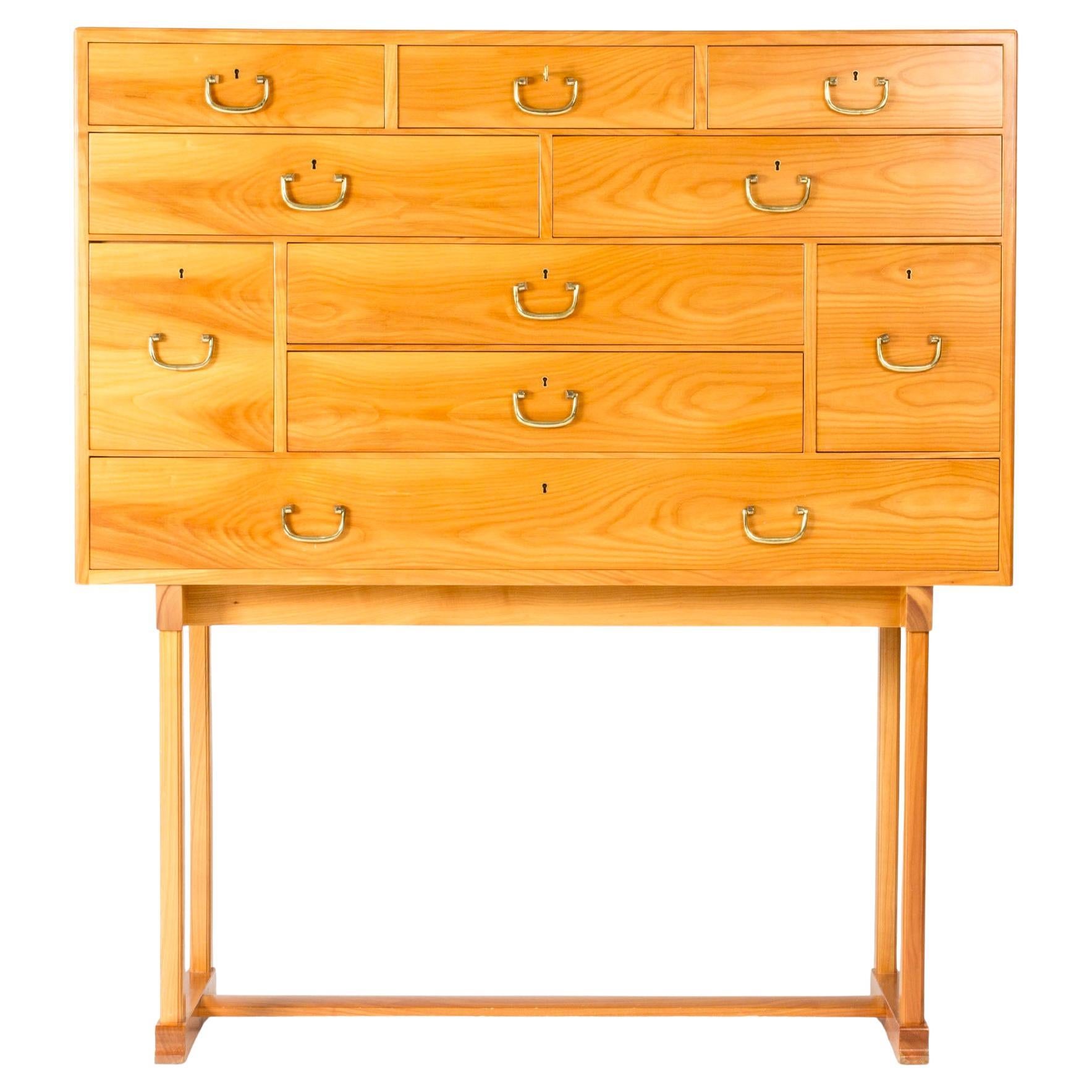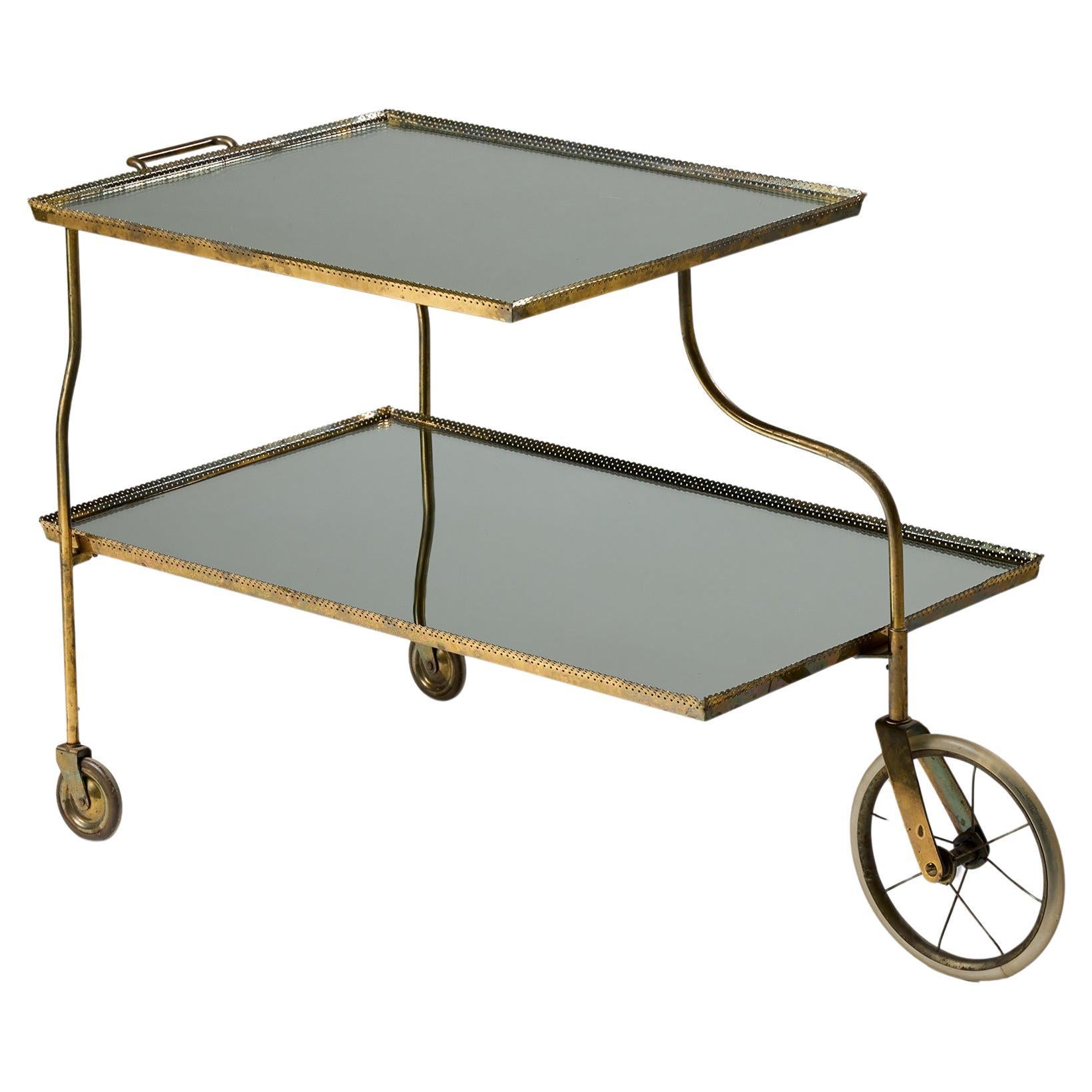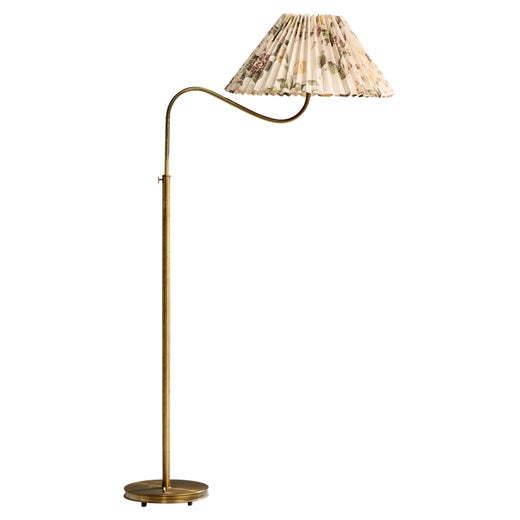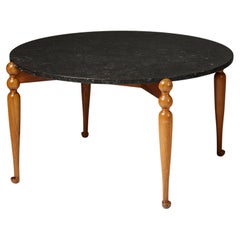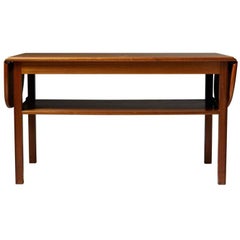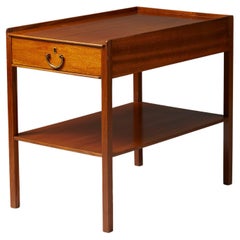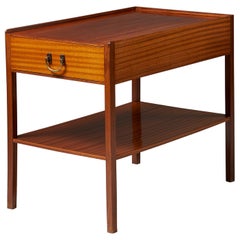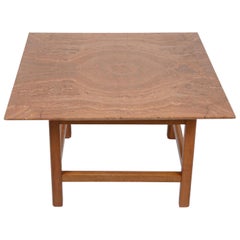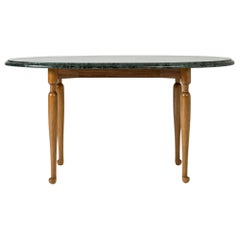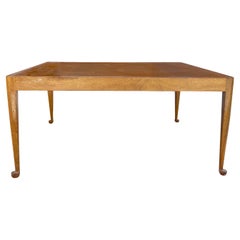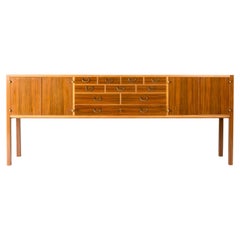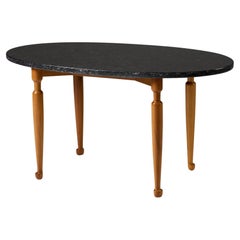
Occasional table model 1112 designed by Josef Frank for Svenskt Tenn, Sweden
View Similar Items
Occasional table model 1112 designed by Josef Frank for Svenskt Tenn, Sweden
About the Item
- Creator:Josef Frank (Designer)
- Dimensions:Height: 17.92 in (45.5 cm)Width: 42.52 in (108 cm)Depth: 17.72 in (45 cm)
- Materials and Techniques:
- Place of Origin:
- Period:
- Date of Manufacture:1950s
- Condition:
- Seller Location:Stockholm, SE
- Reference Number:1stDibs: LU1006642792632
Josef Frank
Austrian architect and furniture and fabric designer Josef Frank was a leading voice for a gentle, humane modernism. His advocacy of warm, comfortable, eclectically styled environments was highly influential in his adopted country of Sweden, and it’s now widely regarded as a harbinger of the backlash against doctrinaire modernism and the embrace of the homespun that occurred in the late 1960s.
The son of a successful Viennese textile manufacturer, Frank studied architecture at Vienna University of Technology, graduating in 1910. From the first years of his practice, he marched counter to the orderly, symmetrical architectural layouts and decors prescribed by contemporaries such as Adolf Loos.
Frank drafted rooms of varying shapes and called for flexible interior-design arrangements. His furniture pieces are light and easy to move — and his chairs are always made of wood, most often with lushly curved steam-bent arms and slatted backs. Frank openly loathed the tubular steel furnishings and “machine for living” aesthetic promoted by Le Corbusier and Ludwig Mies van der Rohe and other Bauhaus principals. “The home must not be a mere efficient machine,” Frank once said. “It must offer comfort, rest and coziness…. There are no puritan principles in good interior decoration.”
Frank — who was Jewish — sensed the dire implications of the rise of Nazism in Germany and Austria, and in 1933 he moved to Stockholm with his Swedish wife, Anna. He became the design chief for the furnishings maker Svenskt Tenn and found a perfect match culturally for his brand of simple, relaxed and bright creations. Like many modernists — notably Charles and Ray Eames and Alexander Girard — Frank had a deep love of folk art, which influenced his designs for a wide array of colorful, richly patterned upholstery fabrics, many based on the classic “Tree of Life” motif.
In all his designs, Frank took inspiration from a broad variety of sources. In his furniture, one can discern traces of Asian patterns, Rococo, Italian Renaissance, Scandinavian handicrafts and even Chippendale pieces. As such, the work of Frank — the friendly modernist — is at home in any type of décor.
Find vintage Josef Frank pillows, armchairs, floor lamps and other furniture on 1stDibs.
More From This Seller
View AllMid-20th Century Swedish Mid-Century Modern Tables
Marble
Vintage 1950s Swedish Scandinavian Modern Side Tables
Mahogany
Mid-20th Century Swedish Mid-Century Modern Side Tables
Brass
Vintage 1950s Swedish Mid-Century Modern Side Tables
Brass
Vintage 1950s Swedish Scandinavian Modern Tables
Mahogany
Mid-20th Century Swedish Mid-Century Modern Dining Room Tables
Mahogany
You May Also Like
Mid-20th Century Swedish Scandinavian Modern Side Tables
Marble
Vintage 1950s Swedish Scandinavian Modern Side Tables
Marble
Mid-20th Century Swedish Mid-Century Modern Coffee and Cocktail Tables
Beech
Vintage 1950s Swedish Scandinavian Modern Side Tables
Mahogany
Vintage 1960s Swedish Scandinavian Modern Side Tables
Elm
Vintage 1950s Swedish Scandinavian Modern Side Tables
Mahogany
